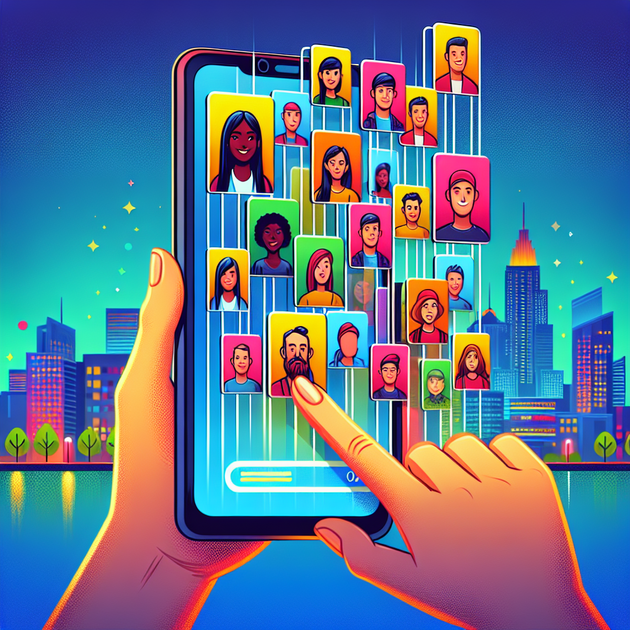Can finding love really be as simple as swiping right on your phone? For millions of people around the world, that’s exactly what Tinder promises—and it’s changed how we think about dating forever.
What Is Tinder and Why Is It So Popular?
Tinder is often called the “swipe app,” and for good reason. With just a flick of your finger to the left or right, you’re making split-second decisions about who you might want to date—or at least chat with. Since its launch in 2012, Tinder has become one of the most recognizable dating apps in the world. The idea is simple but powerful: show users photos of potential matches nearby and let them swipe right to like or left to pass.
Why do so many people use Tinder? For one thing, it’s easy to set up and start using right away. You don’t have to write an essay or answer dozens of questions like with some other platforms. And because there are so many users (over 75 million active monthly as of 2023), there’s always someone new to see.
How Does Tinder Actually Work?
Here’s where “Tinder in a nutshell” really comes alive—the mechanics are straightforward:
- Create a profile with your photos and a short bio.
- Set your search preferences (age range, distance).
- Look at other profiles one by one.
- Swipe right if you’re interested; swipe left if you’re not.
- If two people both swipe right on each other—that’s a match!
- Once matched, you can start chatting within the app.
The whole thing feels more like a game than traditional online dating. There’s no pressure—you can always move on to the next profile if someone doesn’t catch your eye.
The Culture of Swiping Right (and Left)
This “swipe culture” has become another way people talk about modern relationships. Instead of spending weeks crafting long messages or perfecting their profiles, users make quick judgments based mostly on photos and first impressions. According to BBC News, this has made dating faster but also more superficial for some.
Of course, not everyone on Tinder is looking for the same thing. Some want serious relationships; others are just curious or hoping for casual dates. That variety means experiences can be very different from person to person.
The Pros and Cons of Using Tinder
Let’s break down what makes Tinder appealing—and where it sometimes falls short:
- Pro: Huge pool of potential matches—more options than most other apps.
- Pro: Easy to use interface; anyone can figure it out within minutes.
- Con: First impressions rely heavily on looks.
- Con: It can feel impersonal or even repetitive after a while.
Some folks love the instant feedback of matching or not matching; others find the constant swiping exhausting.
An Honest Look at Getting Matches
Getting matches on Tinder isn’t just about having great selfies (though that definitely helps). A clever bio can make you stand out—even something simple like “Loves dogs and bad puns” gets attention because it shows personality.
A friend once told me about their first week on Tinder—they matched with someone after both had accidentally swiped right when distracted by their pets! The conversation started with laughing over their mutual distraction, which turned into meeting up for coffee later that week. Sometimes those random moments spark real connections.
It helps if you:
- Use recent photos that show your face clearly.
- Add something interesting or funny in your bio.
- Avoid using group shots as main profile pictures (it confuses people!).
For more tips on creating strong online dating profiles across different platforms—not just Tinder—check out this helpful guide from Wirecutter by The New York Times.
Tinder vs Other Dating Apps
Tinder isn’t alone in this space. Apps like Bumble and Hinge offer similar experiences but with small twists—for example, Bumble requires women to send the first message after matching. Hinge focuses more on detailed profiles and prompts rather than just photos.
Despite all these options, Tinder remains one of the top choices globally thanks to its simplicity and huge user base. If you’re curious about how these apps compare side by side, TechCrunch has an overview here: TechCrunch Dating Apps Comparison.
The Bottom Line—Is Swiping Right for You?
At its core, “Tinder in a nutshell” means quick decisions and lots of options—sometimes fun, sometimes overwhelming. Whether you’re looking for love or just want to see what all the fuss is about, there’s no harm in giving it a try (as long as safety comes first).
What do you think—is swipe-based dating here to stay? Or will we eventually go back to more old-school ways of meeting new people?

Leave a Reply